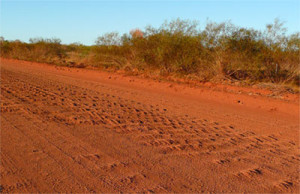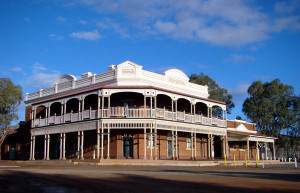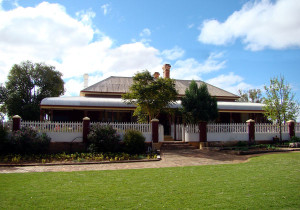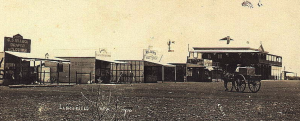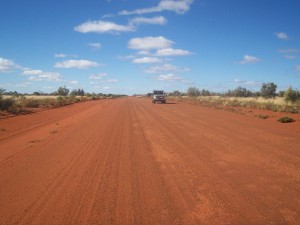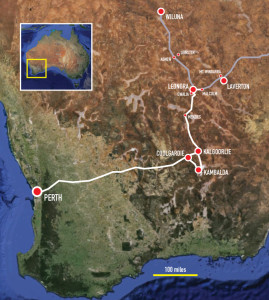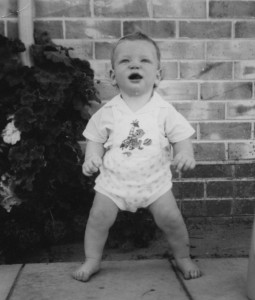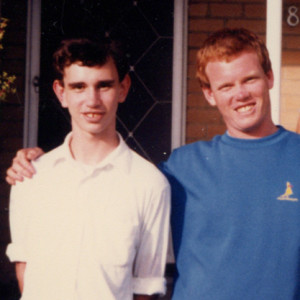Before I get into ghost towns, gold and nickel mining, Herbert Hoover, and growing up amongst it all, I’ll shed more light on the family lineup and chat about some very interesting ancestry. To start with, the crazy side: my father’s.
My father’s parents were an unlikely couple. She was from Malta, he from Wales, and how they connected is anyone’s guess. The bigger mystery is how they stayed together. They fought constantly. Pop, the Welsh coalminer, was an angry, short-tempered, stubborn old man who had no time for anyone, and less time for their opinions. I was never close to him. He and Dad fought as well, long-winded arguments about politics in particular. Pop was a socialist in his thinking, borderline communist according to Dad, and Dad more-or-less leaned conservative. If Pop wasn’t arguing or enjoying a plate of tripe, he’d be watching television or sitting alone out on the front porch with his cigarette and newspaper. He also painted, which I wasn’t very much aware of; his studio was a little shed up in the far corner of the back yard, which was strictly off-limits to me. We shared initials, VW, which he signed to each painting, some of which hung about the house. His name, Ven, was short for Venerable, supposedly named after one of many British battleships of that name.
Nana was quick to the boil as well, feisty and pushy. Her fights were with the adults; she generally doted on us kids. She was particularly protective of Dean, my brother, and monitored our playtime carefully. She babied Dean as if her own son, which contributed to my confusion about him, thinking he actually was her son (and therefore my uncle). As I mentioned earlier, we didn’t look alike. There were reasons for her obsessions over Dean: her youngest son, my Uncle Francis, died at around 19 from a blot clot. It had apparently formed after he dropped weights on his foot and eventually made its way up and killed him. This happened when I was a baby, so I have no recollection of him. Nana was forever despondent about Francis’ death, and blamed Dad for it. Many arguments between Dad and his mother leaned towards those accusations. Dean’s middle name, Francis, was chosen in his honor (Dean was born after Francis died). Our visits to Perth to visit Nana and Pop were few, and I looked forward to visiting “Uncle” Dean. After bitter arguments between Dad and his folks, we often left early. It really was a wonder that a family arose from all this.
If I did get to share some quiet time with Dean, it was to sit and draw, and play trains. He was particularly fond of military history, probably prompted by Pop, and drew characters dressed in various uniforms of past wars. He was quite good. I was keen to play trains, which were his babies, and that often ended badly, and Nana would jump to action and sequester me away in another room. If I was lucky, I was allowed to go across the street to the large park, and play on the apparatus at the far end. Dean was never allowed to come with me; he was barely ever allowed to leave the house. I could remember hearing him cry at the doorstep when I went to the park, which was no doubt followed by arguments between Dad and Nana about why Dean wasn’t allowed to go.
I last saw Nana, Pop and Dean in 1986, the last year I was in Perth. Dean had confided in me that he was studying Zen Buddhism, and eventually took up martial arts. I last spoke to him in 1996; he had married but didn’t have kids, furthered his martial arts and Zen Buddhism trainings and study, and as far as I know maintains a Buddhist temple somewhere in Perth. Pop later developed diabetes, no doubt helped along by his awful diet, and eventually died blind and legless. Nana lived on to at least 90, as far as I know.
I have very little information about Dad’s side of the family. He has another brother, Peter, who we would occasionally visit while down in Perth. I have no contact with him and his family now, and wouldn’t know where to look (the names are too common). There was Uncle Joe and Aunt V, who have since passed on. I recall visiting them one time. I was fascinated by a scar that Aunt V had on her leg where cancer had been removed. It looked like a cube had been removed, like in Minecraft. I couldn’t stop looking at it.
There was Nana’s mother, who lived alone close to downtown Perth. She was the tiniest and sweetest little lady. She had a cute little Maltese, and several cockatoos in the back yard, where I’d spend most of my time. The inside of her house looked like a museum from the early 19oo’s, old furniture and other things I was reminded not to touch. I did like going over there, although I think we only did two or three times in memory. On one occasion I vaguely remember getting into trouble over something, and Dad taking me into a bedroom and applying the belt to my rear end while little Nana protested outside. Seriously, it happened so often that any such occasion seems a blur, one incident running into another.
I ran away from Nana and Pop’s on one occasion, wandering up the street a ways until I stumbled on some kids playing in their back yard. I invited myself in, and everything seemed fine and great until Dad finally found me. I was dragged back to the house, and secured in a bedroom alone. Outside the door, I heard arguing between Dad and Nana; he wanted in to give me a good thrashing, and Nana wasn’t about to let him. I sat there in the room, staring at some old religious-themed painting on the wall, until I fell asleep.
Running away from home was a fantasy I held for quite some time. We lived 500 miles away from Perth, and I often wondered about how I’d go about getting to Perth on foot. Out there in the desert, with nothing between, I wouldn’t have lasted too long. I’d stare at the horizon in the direction of Perth and contemplate it all the same. I had everything memorized: I knew every street and intersection from Greenmount on the outskirts of Perth to Nana’s house in Wilson, an inner suburb. If there’s anything I know well, it’s maps and directions.
So why did Dean end up growing up with Nana and Pop, and not with me? The story Dad told me was that he was left with Dean and I after our mother left, and being unable to care for both on his own, left Dean with his parents. Since I was older, he took me along with him. I heard only his version for almost all my life. My mother’s take on things is quite the opposite: he was extremely abusive towards her, and took us boys away from her, and threatened to kill her if she made efforts to see us again. Dad went galavanting off out in the countryside looking for work, me in tow, so I never got to see her. He left Dean with his parents, with the intent of coming back for him. This never happened; Dean grew up entirely within Nana and Pop’s household. My mother was initially allowed to visit Dean on occasion, but was eventually told that she wasn’t welcome anymore. I’m not particularly clear on the precise details, and since reliving the ordeal even today is upsetting for her, I figure it’s history best left buried.
Which version do I believe? Given my father’s extreme temper, irrationality and penchant for tall tales, I lean towards my mother’s version.
For Dean, growing up with Nana and Pop was a grueling ordeal. He grew up resenting Dad for leaving him behind and never coming for him. By 1995, when I renewed contact with Dean, he had since left the house and was married. A lot of the details surrounding our early days were still unavailable to me, so I tried acting as a sort of neutral mediator between the two of us and Dad. It didn’t go well. Heated accusations flew immediately; Dean would call Dad’s house and unload on anyone who answered. My involvement with Dean didn’t go over well with Dad’s family as a result. To top it off, Dean suggested that I was taking Dad’s side. I was taken aback by how angry he was then. By early 1996, he opted to not pursue a relationship with me, and that was the last time we spoke. In years since, as I came to know more about things, I understood better why he was that angry. I’ve searched for him in hopes of reestablishing contact to perhaps open up some kind of discussion. While I might have an idea where he is, there has been no response to calls or mail.
Some years before, Dean had confided in me that he was pursuing martial arts and had converted to Buddhism. Nana, in particular, was never to know about it. During our brief conversations in 1995 he talked more about martial arts, how he’d progressed, and had become an instructor himself. His Zen Buddhist faith was still strong, and as far as I know, maintains a temple in Perth. I don’t know much about Zen Buddhism, but something tells me his anger to family and years of bottled up resentment seem contrary to the peace and tranquility I might expect a Buddhist to adhere to. There’s a part of me that hopes that one day, if we are to reconnect and settle differences, that he might find that “inner peace” he strives for. Again, I don’t know how that works in Buddhism, and it’s probably altruistic on my part to think it could work one day. The bottom line is that I miss him, and if I had any kind of sibling relationship with him, it would be the only one as the half-siblings wrote me off after 1996. (I should add that the debacle between Dad, Dean and I at that time was a tangent to the real reasons all contact was cut off between Dad, his family, and I. That’s worth a book on its own).
Back now to my early days with Dad: He and I were not alone. Dad had a girlfriend, and she went on to become my stepmother. The redheaded one I mentioned before, who I grew up to think was my real mother. The Dutch one, which made me think I was Dutch as a result, until later. She was young, around 16 or 17, when my father entered her picture. How all this transpired is fuzzy at best. There was some mention that Dad, Mum and I lived in a caravan across the way from FR and her folks, and FR was somehow brought into the scene to babysit me when either of my folks were out of scene. FR’s parents did not care for my father, a fact I became aware of on my own when I was old enough to figure some things out for myself.
FR’s father (CR) was an engineer, and was able to find plenty of work in Western Australia during the 1960s. Both he and his wife (GR) were Freedom Fighters in the Dutch Underground during World War II. The family arrived in Australia by ship in the early 1950s. During the years I was secluded away in the desert goldfields with Dad and FR, FR’s parents moved to Queensland and settled in Slack’s Creek, an outer suburb of Brisbane. They had a huge lot on Kingston Drive, and built their own house, which they dubbed “This’ll Do.” It sounded like “Thistle Do” to me, and as such, I never understood the name during the one visit there. GR worked for Australia Post for many years and became active in politics, rising into the local ranks of the National Party (which during the 1970s was also known as the National Country Party, then eventually just the Nationals, always leaning center-right).
I had no recollection of FR’s parents when I was little. When FR, Dad and I settled in Gwalia in 1971, her only contact with her parents was by phone or mail; there was only one phone booth there in the town, so FR would amass a collection of 20¢ and 50¢ coins for the once-in-a-blue-moon phone call to Queensland. If I got a chance to say hello, it was for only a few seconds. This was how I established a knowing relationship with FR’s parents, who I would come to know as Grandma and Grandad. Grandma’s accent was still heavily-Dutch influenced, and it was sometimes hard to understand her. She did all the talking when I spoke to her. I first heard Grandad’s voice when we finally met face to face, in 1976 (I was 10).
In June of 1976 we made the trek from Western Australia to Queensland to visit Grandma and Grandad. My stepsiblings were now on the scene; HJ Jr. was 5, and AJ was only a few months old. We drove across the Nullarbor Plain, highway 1, which at the time was unsealed for several hundred miles. The experience was like no other, braver souls would hastily pass on the idea of driving that road. I read somewhere that AC/DC’s Bon Scott’s inspiration for “Highway to Hell” was that particular road. Hundreds of miles of finely ground dust (called bulldust) and corrugations test the patience of drivers and the mechanical integrity of vehicles. Imagine hundreds of miles of teeth-knocking boredom with one of the most irritable people on the planet at the wheel. To make matters worse, we had to come back.
Those corrugations in the road, created over time by wearing vehicles and weather, are the bane of the Outback Australian road.
Next episode: More family history, this time my mother’s (a tad more interesting).
